ECONAZOLE CREAM - TOPICAL
PHONETIC PRONUNCIATION: (e-KON-a-zole)
COMMON BRAND NAME(S): Spectazole
GENERIC NAME(S): econazole nitrate
Uses
USES: Econazole is used to treat a variety of fungal skin infections such as athlete's foot, jock itch, and ringworm. This medication is also used to treat a skin condition known as pityriasis (tinea versicolor), a fungal infection that causes a lightening or darkening of the skin of the neck, chest, arms, or legs. Econazole is an azole antifungal that works by preventing the growth of fungus.
How to use ECONAZOLE CREAM - TOPICAL
HOW TO USE: Use this medication on the skin only. Clean and thoroughly dry the area to be treated. Apply this medication on and around the affected area as directed by your doctor, usually once or twice a day. The dosage and length of treatment depend on the type of infection being treated. Do not apply this medication more often or use for longer than prescribed. Wash your hands after using unless the area being treated includes the hands. Do not wrap, cover, or bandage the area unless directed to do so by your doctor. Do not apply this medication in the eyes, nose, or mouth, or inside the vagina. If you do get the medication in those areas, flush with plenty of water. Use this medication regularly to get the most benefit from it. To help you remember, use it at the same time(s) each day. Continue to use this medication until the full prescribed amount is finished, even if symptoms disappear after a few days. Stopping the medication too early may result in a return of the infection. Tell your doctor if your condition lasts after 2 weeks of treatment (or after 4 weeks of treatment for athlete's foot) or if it gets worse.
Side Effects
Precautions
Interactions
Overdose
Images
Reviews
Faq for ECONAZOLE CREAM - TOPICAL
Econazole cream is a medication used topically to treat fungal infections of the skin, commonly caused by yeast or dermatophytes. It belongs to the class of drugs known as azole antifungals.
Econazole cream works by inhibiting the growth of fungi responsible for the infection. It does this by interfering with the synthesis of ergosterol, an essential component of fungal cell membranes.
Econazole cream is primarily used to treat fungal infections such as athlete's foot (tinea pedis), jock itch (tinea cruris), and ringworm (tinea corporis). It can also be prescribed for yeast infections like candidiasis.
Econazole cream should be applied to the affected area(s) of the skin as directed by your healthcare provider. It is usually used twice a day, and the duration of treatment may vary depending on the specific condition being treated. It is essential to follow the prescribed dosage and complete the full course of treatment.
Common side effects of econazole cream may include mild itching, burning, stinging, or redness at the application site. These side effects are usually temporary and should subside. However, if you experience severe irritation, rash, or any other unusual symptoms, you should inform your doctor.
If you are pregnant or breastfeeding, you should consult your healthcare provider before using econazole cream. Although there is limited information on its safety during pregnancy or breastfeeding, it is generally advised to use it only if the potential benefits outweigh the risks.
Econazole cream is typically used topically and has minimal systemic absorption. Therefore, it is less likely to interact with other medications taken orally. However, it is always recommended to inform your doctor about all the medications, including over-the-counter drugs and supplements, you are taking to avoid any potential interactions.
The time required for econazole cream to work may vary depending on the severity and location of the infection. In many cases, improvement is noticed within a few days of starting treatment. However, it is essential to complete the full prescribed course of treatment, even if the symptoms improve earlier, to ensure complete eradication of the infection.
Econazole cream can be prescribed for children, but the dosage and duration of treatment may differ depending on the age and weight of the child. It is always advisable to consult a pediatrician before using any medication on children.
Disclaimer
IMPORTANT: HOW TO USE THIS INFORMATION: This is a summary and does NOT have all possible information about this product. This information does not assure that this product is safe, effective, or appropriate for you. This information is not individual medical advice and does not substitute for the advice of your health care professional. Always ask your health care professional for complete information about this product and your specific health needs.
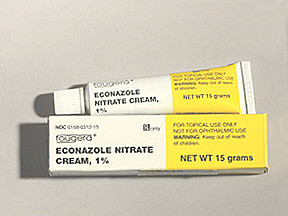
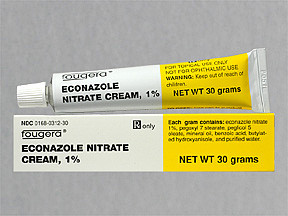
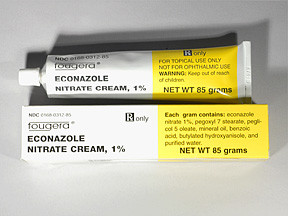
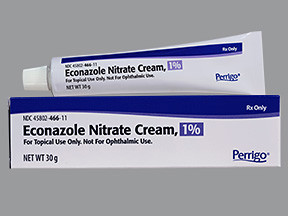
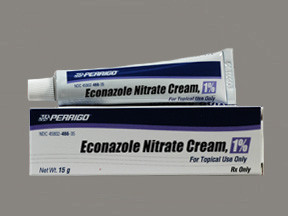
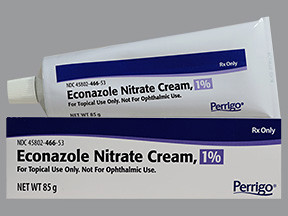

No Reviews Yet